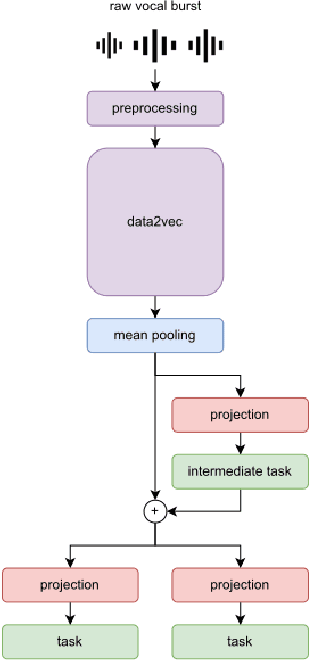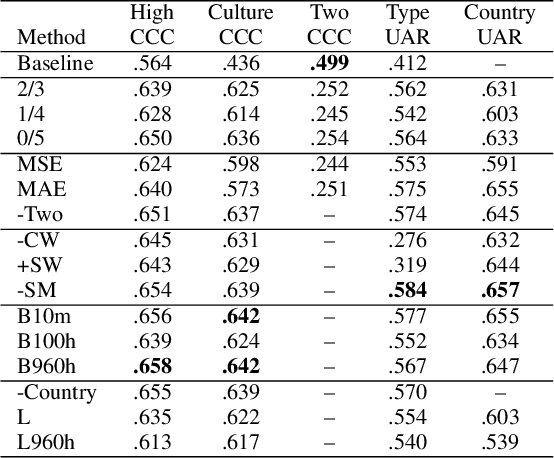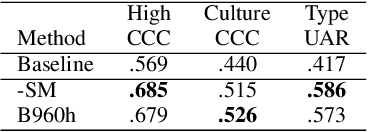An Efficient Multitask Learning Architecture for Affective Vocal Burst Analysis
Paper and Code
Sep 28, 2022


Affective speech analysis is an ongoing topic of research. A relatively new problem in this field is the analysis of vocal bursts, which are nonverbal vocalisations such as laughs or sighs. Current state-of-the-art approaches to address affective vocal burst analysis are mostly based on wav2vec2 or HuBERT features. In this paper, we investigate the use of the wav2vec successor data2vec in combination with a multitask learning pipeline to tackle different analysis problems at once. To assess the performance of our efficient multitask learning architecture, we participate in the 2022 ACII Affective Vocal Burst Challenge, showing that our approach substantially outperforms the baseline established there in three different subtasks.
 Add to Chrome
Add to Chrome Add to Firefox
Add to Firefox Add to Edge
Add to Edge